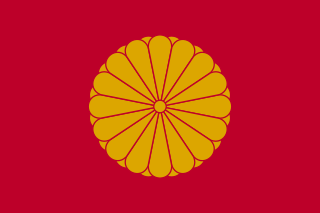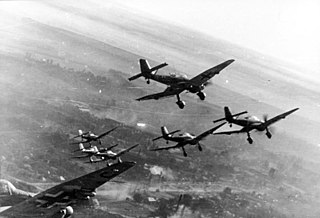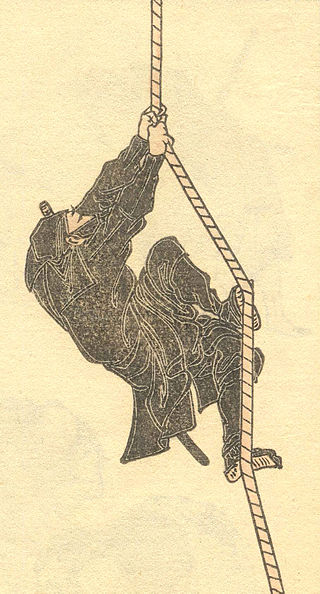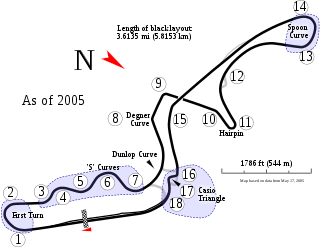
The emperor of Japan or Tennō, literally "ruler from heaven" or "heavenly sovereign", is the hereditary monarch and head of state of Japan. The emperor is defined by the Constitution of Japan as the symbol of the Japanese state and the unity of the Japanese people, his position deriving from "the will of the people with whom resides sovereign power". The Imperial Household Law governs the line of imperial succession. Pursuant to his constitutional role as a national symbol, and in accordance with rulings by the Supreme Court of Japan, the emperor is personally immune from prosecution. By virtue of his position as the head of the Imperial House, the emperor is also recognized as the head of the Shinto religion, which holds him to be the direct descendant of the sun goddess Amaterasu. According to tradition, the office of emperor was created in the 7th century BC, but modern scholars believe that the first emperors did not appear until the 5th or 6th centuries AD.

Japan is an island country in East Asia. It is in the northwest Pacific Ocean and is bordered on the west by the Sea of Japan, extending from the Sea of Okhotsk in the north toward the East China Sea, Philippine Sea, and Taiwan in the south. Japan is a part of the Ring of Fire, and spans an archipelago of 14,125 islands, with the five main islands being Hokkaido, Honshu, Shikoku, Kyushu, and Okinawa. Tokyo is the country's capital and largest city, followed by Yokohama, Osaka, Nagoya, Sapporo, Fukuoka, Kobe, and Kyoto.

Manga are comics or graphic novels originating from Japan. Most manga conform to a style developed in Japan in the late 19th century, and the form has a long history in earlier Japanese art. The term manga is used in Japan to refer to both comics and cartooning. Outside of Japan, the word is typically used to refer to comics originally published in Japan and published in translation, i.e. a Japanese comic book with English text.

Shogun, officially Sei-i Taishōgun, was the title of the military rulers of Japan during most of the period spanning from 1185 to 1868. Nominally appointed by the Emperor, shoguns were usually the de facto rulers of the country, although during part of the Kamakura period and Sengoku period, shoguns were themselves figureheads, with real power in the hands of the Shikken (執権) of the Hōjō clan and Kanrei (管領) of the Hosokawa clan. In addition, Taira no Kiyomori and Toyotomi Hideyoshi were leaders of the warrior class who did not hold the position of shogun, the highest office of the warrior class, but who gained the positions of Daijō-daijin and Kampaku, the highest offices of the aristocratic class, and ran their governments as de facto rulers.

Tokyo, officially the Tokyo Metropolis, is the capital of Japan and one of the most populous cities in the world with a population of over 14 million residents as of 2023. The Tokyo metropolitan area, which includes Tokyo and nearby prefectures, is the world's most-populous metropolitan area with 40.8 million residents as of 2023, and is the second-largest metropolitan economy in the world after New York, with a 2022 gross metropolitan product estimated at US$2.08 trillion.

World War II or the Second World War was a global conflict that lasted from 1939 to 1945. The vast majority of the world's countries, including all the great powers, fought as part of two opposing military alliances: the Allies and the Axis. Many participating countries invested all available economic, industrial, and scientific capabilities into this total war, blurring the distinction between civilian and military resources. Aircraft played a major role, enabling the strategic bombing of population centres and delivery of the only two nuclear weapons ever used in war. It was by far the deadliest conflict in history, resulting in 70–85 million fatalities. Millions died due to genocides, including the Holocaust, as well as starvation, massacres, and disease. In the wake of Axis defeat, Germany, Austria, and Japan were occupied, and war crime tribunals were conducted against German and Japanese leaders.

A ninja or shinobi was a covert agent, mercenary, or guerrilla warfare expert in feudal Japan. The functions of a ninja included siege and infiltration, ambush, reconnaissance, espionage, deception, and later bodyguarding and their fighting skills in martial arts, including ninjutsu. Their covert methods of waging irregular warfare were deemed dishonorable and beneath the honor of the samurai. Though shinobi proper, as specially trained warriors, spies, and mercenaries, appeared in the 15th century during the Sengoku period, antecedents may have existed as early as the 12th century.

The Battle of the Coral Sea, from 4 to 8 May 1942, was a major naval battle between the Imperial Japanese Navy (IJN) and naval and air forces of the United States and Australia. Taking place in the Pacific Theatre of World War II, the battle was the first naval action in which the opposing fleets neither sighted nor fired upon one another, attacking over the horizon from aircraft carriers instead.

The Second Sino-Japanese War, also known in Japan as the Second China–Japan War, and in China as the Chinese War of Resistance against Japanese Aggression, was fought between the Republic of China and the Empire of Japan from 1937 to 1945 as part of World War II. It is often regarded as the beginning of World War II in Asia, though some scholars consider the European War and Pacific War to be separate, albeit concurrent. It was the largest Asian war in the 20th century and has been described as "the Asian Holocaust", in reference to the scale of Japanese war crimes against Chinese civilians.

Spirited Away is a 2001 Japanese animated fantasy film written and directed by Hayao Miyazaki. Spirited Away tells the story of Chihiro "Sen" Ogino, a ten-year-old girl who, while moving to a new neighborhood, inadvertently enters the world of kami. After her parents are turned into pigs by the witch Yubaba, Chihiro takes a job working in Yubaba's bathhouse to find a way to free herself and her parents and return to the human world. The film was animated by Studio Ghibli for Tokuma Shoten, Nippon Television Network, Dentsu, Buena Vista Home Entertainment, Tohokushinsha Film, and Mitsubishi and distributed by Toho.

Yukio Mishima, born Kimitake Hiraoka, was a Japanese author, poet, playwright, actor, model, Shintoist, nationalist, and founder of the Tatenokai. Mishima is considered one of the most important writers of the 20th century. He was considered for the Nobel Prize in Literature five times in the 1960s—including in 1968, but that year the award went to his countryman and benefactor Yasunari Kawabata. His works include the novels Confessions of a Mask and The Temple of the Golden Pavilion, and the autobiographical essay Sun and Steel. Mishima's work is characterized by "its luxurious vocabulary and decadent metaphors, its fusion of traditional Japanese and modern Western literary styles, and its obsessive assertions of the unity of beauty, eroticism and death", according to author Andrew Rankin.

Inuyasha is a Japanese manga series written and illustrated by Rumiko Takahashi. It was serialized in Shogakukan's shōnen manga magazine Weekly Shōnen Sunday from November 1996 to June 2008, with its chapters collected in 56 tankōbon volumes. The series begins with Kagome Higurashi, a fifteen-year-old middle school girl from modern-day Tokyo who is transported to the Sengoku period after falling into a well in her family shrine, where she meets the half-dog demon, half-human Inuyasha. After the sacred Shikon Jewel re-emerges from deep inside Kagome's body, she inadvertently shatters it into dozens of fragments that scatter across Japan. Inuyasha and Kagome set to recover Jewel's fragments, and through their quest, they are joined by the lecherous monk Miroku, the demon slayer Sango, and the fox demon Shippō. Together, they journey to restore the Shikon Jewel before it falls into the hands of the evil half-demon Naraku.

The national flag of Japan is a rectangular white banner bearing a crimson-red circle at its center. This flag is officially called the Nisshōki, but is more commonly known in Japan as the Hinomaru. It embodies the country's sobriquet: the Land of the Rising Sun.

YuYu Hakusho is a Japanese manga series written and illustrated by Yoshihiro Togashi. It tells the story of Yusuke Urameshi, a teenage delinquent who is struck and killed by a car while attempting to save a child's life. After a number of tests presented to him by Koenma, the son of the ruler of the afterlife, Yusuke is revived and appointed the title of "Underworld Detective". With this title he must investigate various cases involving demons and apparitions in the Human World, with the manga gradually becoming more focused on martial arts battles and tournaments as it progresses. Togashi began creating YuYu Hakusho around November 1990, basing the series on his interests in the occult and horror films and an influence of Buddhist mythology.

The Last Samurai is a 2003 epic period action drama film directed and produced by Edward Zwick, who also co-wrote the screenplay with John Logan and Marshall Herskovitz from a story devised by Logan. The film stars Ken Watanabe in the title role, with Tom Cruise, who also produced, as a soldier-turned-samurai who befriends him, and Timothy Spall, Billy Connolly, Tony Goldwyn, Hiroyuki Sanada, and Koyuki in supporting roles.

The Suzuka International Racing Course, a.k.a “Suzuka Circuit”, is a 5.807 km (3.608 mi) long motorsport race track located in Ino, Suzuka City, Mie Prefecture, Japan and operated by Honda Mobilityland, a subsidiary of Honda Motor Co, Ltd. It has a capacity of 155,000.

Hajime no Ippo is a Japanese boxing-themed manga series written and illustrated by George Morikawa. It has been serialized by Kodansha in the shōnen manga magazine Weekly Shōnen Magazine since October 1989, with its chapters collected into 140 tankōbon volumes as of February 2024. It follows the story of high school student Ippo Makunouchi, as he begins his career in boxing and over time obtains many titles and defeats various opponents.

Old Japanese is the oldest attested stage of the Japanese language, recorded in documents from the Nara period. It became Early Middle Japanese in the succeeding Heian period, but the precise delimitation of the stages is controversial. Old Japanese was an early member of the Japonic language family. No genetic links to other language families have been proven.

During World War II, it was estimated that between 35,000 and 50,000 members of the Imperial Japanese Armed Forces surrendered to Allied servicemembers prior to the end of World War II in Asia in August 1945. Also, Soviet troops seized and imprisoned more than half a million Japanese troops and civilians in China and other places. The number of Japanese soldiers, sailors, marines, and airmen who surrendered was limited by the Japanese military indoctrinating its personnel to fight to the death, Allied combat personnel often being unwilling to take prisoners, and many Japanese soldiers believing that those who surrendered would be killed by their captors.


















